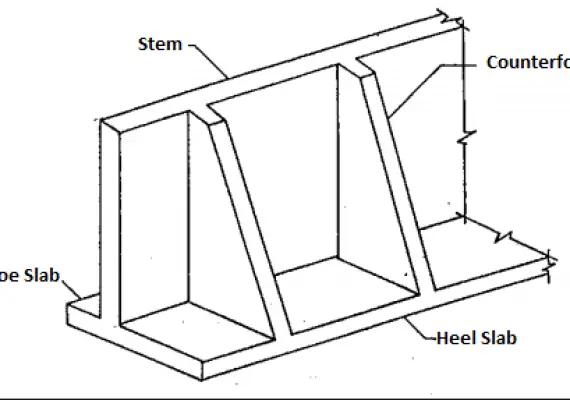What Is Meant By Caisson Foundation?
What Is Meant By Caisson Foundation?
A caisson foundation is a type of sunken structure used to support buildings, bridges or other structures. It consists of a watertight chamber filled with air that is constructed on the ground surface and sunk into position by excavating the soil around it.
This process creates a form of construction known as dry dock excavation since no water needs to be used for installation. The caisson acts like a floating box within the earth and can be built from reinforced concrete, timber, steel or masonry depending on the load it must carry and soil conditions at the site.
The popularity of this type of foundation lies in its ability to support large loads while providing an economical alternative to traditional deep foundations like bored piles.
Generally, caisson foundation is a type of foundation used in construction projects to create an isolated column of watertight structural support for a bridge, pier, or other building.
The caisson is an open bottomed chamber that is sunk into the ground and then filled with concrete.
Caissons are most often built to create deep foundations on bedrock or boulders, as well as to build structures in bodies of water such as rivers or oceans.
In terms of engineering principles and safety, they are generally considered superior to shallow foundations due to their greater depth and resistant capacity against seismic activity, floods and other environmental factors.
Where Is Caisson Foundation Used?
Caisson foundation, commonly known as “floating foundations” are used when constructing a structure that needs to be built in water.
This type of foundation is commonly used in marine structures like bridges and docks where the soil conditions require it.
It is also used in cases where a construction site is located in shallow waters like lakes, rivers or seas for building breakwaters and retaining walls.
Caissons can also be constructed on exposed coastal areas very close to sea level to provide additional stability for structures.
In addition, they are often utilized to build large offshore wind turbines and other types of heavy-duty industrial installations.
Why Caisson Foundation Is Used?
Caisson foundations are used in the construction of complicated structures, such as bridges, dams and ports.
The caisson foundation involves embedding a large box-like structure deep into the ground that is sealed from any water leakage.
This acts as an anchor point for the structure above. Caisson foundations are favoured due to their strong resistance to lateral loads, ability to resist heavy weight on top of them and their high performance against seismic activity.
It is also advantageous to use such a foundation because it eliminates any excavation or concrete pouring in areas which may have been previously weakened by extreme weather events or uneven topography.
What Are The Advantages Of Caisson Foundation?
Caisson foundation is a popular form of deep foundation that offers many advantages in terms of structural stability and load capacity.
By providing greater bearing capacity than shallow foundations, caissons can handle heavier loads over a smaller area and are effective for sites where the ground is made up of softer soils.
Furthermore, this type of foundation reduces settlement by distributing the load over a larger base and allows for construction to occur in waters with relatively low depths without sacrificing structural integrity.
Additionally, caissons require minimal maintenance and can accommodate subsurface rock formations that may be encountered at significant depth when compared to other foundation types.
What Is The Difference Between Caisson And Pier Foundation?
A caisson foundation is a structural construction element used to form deep foundations, while a pier foundation consists of a column or post embedded below ground level in soil and typically connected with an overhead beam.
Caissons are usually made of concrete or steel and can be pre-cast, cast-in-place, placed in water or bored into the earth.
Pier foundations act as vertical supports for large structures such as bridges, where they are filled with concrete and have steel reinforcement rods added.
The major difference between caisson and pier foundation is that caissons involve digging deep trenches into the ground while piers do not require extensive excavation work; instead, just holes or columns are drilled or driven into the ground.
Why Is Caisson Necessary In Construction?
Caissons are necessary in construction to provide a dry, watertight space for workers to safely and conveniently access underwater areas for the foundation of structures.
The caisson is a reinforced concrete cylindrical or box structure which can either be open or filled with compressed air, allowing it to float on the surface of the water or rest on the bed of the body of water while providing an area where waves and currents dissipate.
They are used in bridge and pier foundations, dam foundations, marine piers and jetties, mooring piles, boat lifts and dock walls.
Furthermore, caissons can provide stability in high-water conditions such as floods or storms by acting as an additional measure of protection for flooding damages.
